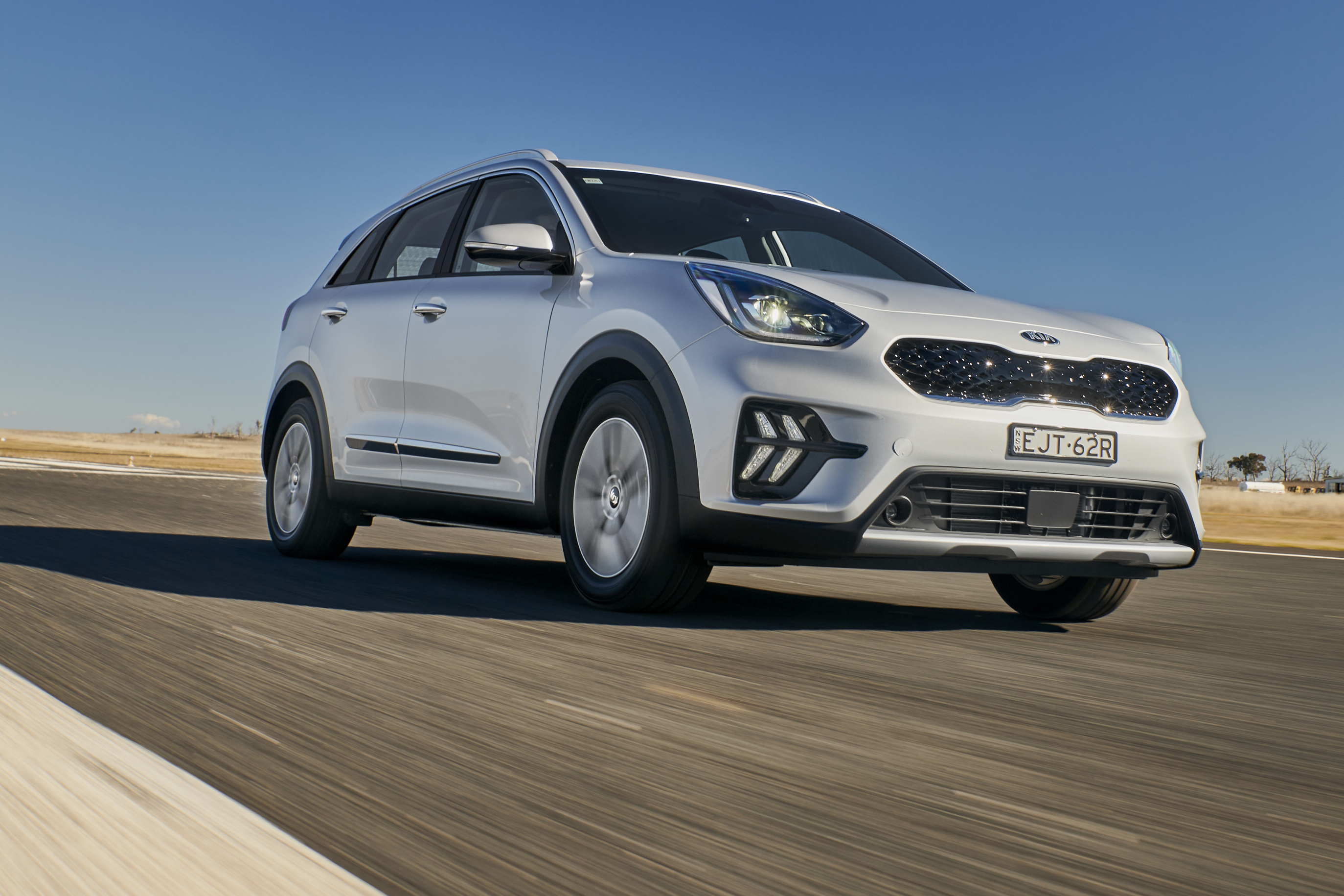Score breakdown
Things we like
- Decent EV range
- Quick 240v home charging
- Roomy cabin
- Comfortable ride
Not so much
- Dated looks
- Limited charging capacity
- Smallish boot
- Soon to be superceded
The Kia Niro is the Korean carmaker’s first electrified model to arrive in Australia with not just a hybrid powertrain, but plug-in hybrid and battery-electric versions as well.
We were meant to drive the Niro EV during its launch week but apparently, the car with my name on it was damaged a week earlier, so we grabbed the plug-in hybrid (PHEV), which sits in the middle of the range in terms of pricing and eco-friendliness, to see whether it offers the best or worst of both worlds.
The first thing you notice about the Niro is that it looks a little dated because, well, it is. While new to Australia, it has been around since 2016 when the hybrid (HEV) was first launched overseas. The plug-in hybrid arrived in 2017 and the battery-electric version – known as the e-Niro in other markets but Niro EV here – arrived a year later.
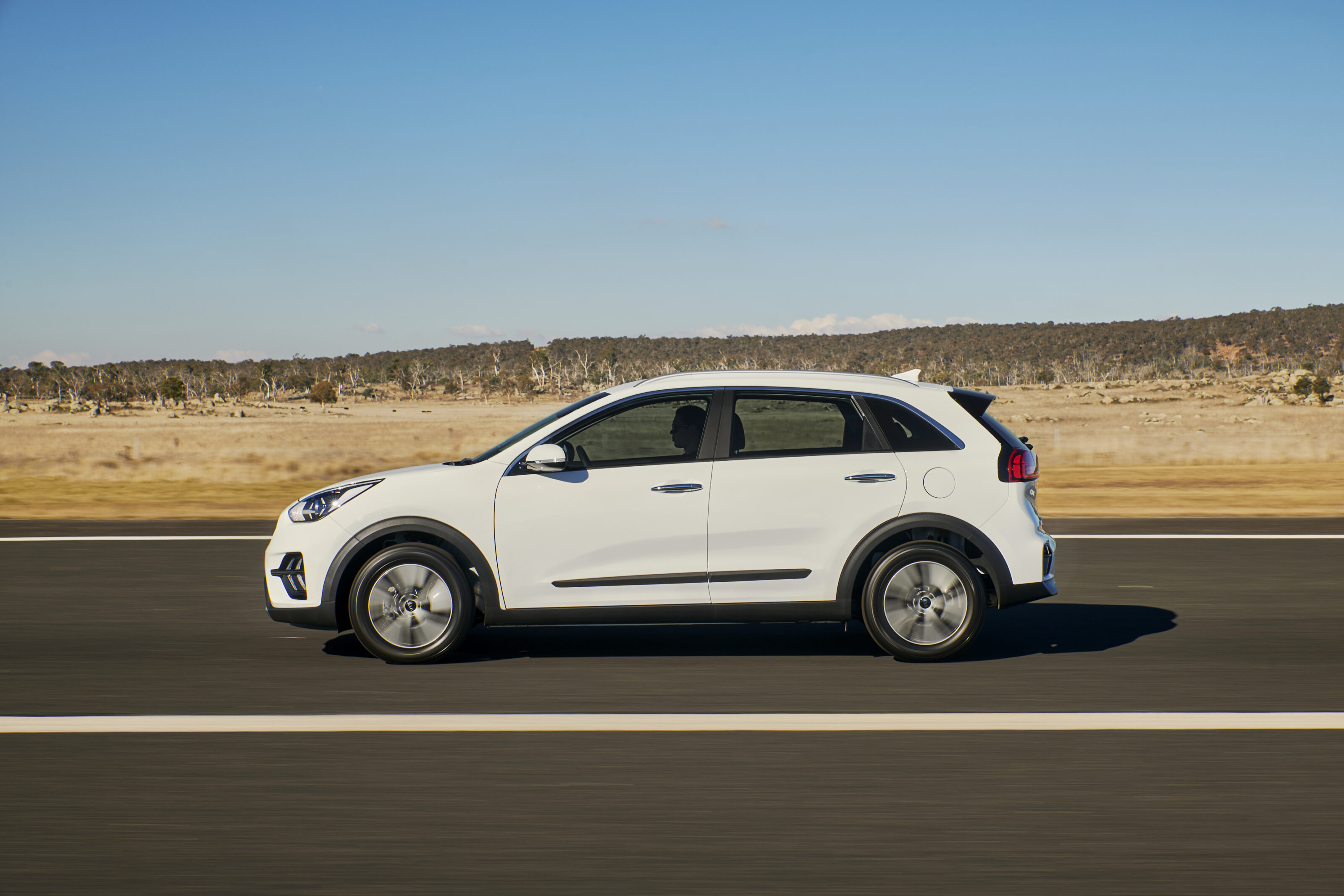
All three versions have just landed in Australia despite an all-new model looming on the horizon in readiness for its 2022 launch.
Kia has done its best to contemporize the exterior, but it still looks like a pre-facelift Sportage with the narrow Scheyer Tiger Grille treatment and bulging headlights, while lacking the distinctive character lines seen on newer models such as the Seltos and Sorento.
The conservatively designed interior isn’t as fresh as the latter models either, but it’s pleasingly neat and uncomplicated and free of the unnecessary gimmicks found in other electrified vehicles, like weird gear shifters – I, for one, am a fan of the classic T-bar.

“That range is pretty good considering the smallish 8.9kWh battery and is more than enough to cover the average Aussie commute.”
In fact, it’s only when you get a closer look at some buttons and the gauge cluster that you realise this is a PHEV.
Our test car is the Niro PHEV S – the entry-level spec that’s available with all three powertrains, with the range topped by Sport variants.
It’s priced at $46,590 before on-roads, which is $7500 more than the Hybrid S and $6000 less than the EV S.
By comparison, the bigger Mitsubishi Outlander ES PHEV medium SUV starts at $47,390 and the MG HS Essence PHEV is $46,990.
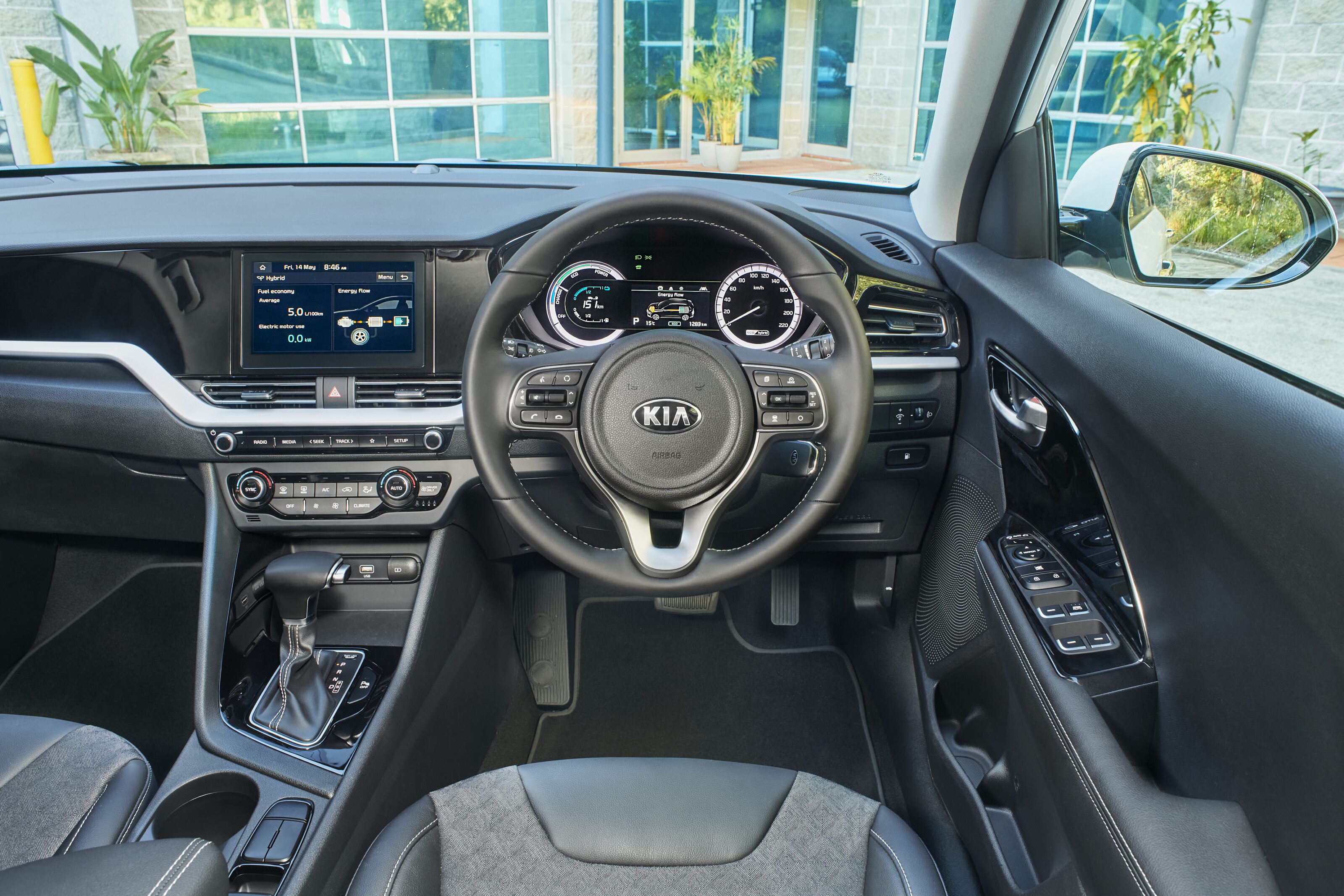
While the S is entry-level spec, it comes with features you’ll find in many mid-spec SUVs including an 8.0-inch touchscreen that’s embedded into the dashboard (which is coming back into fashion), wireless Apple CarPlay and Android Auto, digital radio, combination leather and cloth upholstery, and power-operated front seats.
There’s also keyless entry and electric powered and folding mirrors, smart adaptive cruise control, electronic parking brake, regenerative braking, LED daytime running lights, LED rear combination lights, rain-sensing windscreen wipers and 16-inch aerodynamic alloy wheels.
Standard safety features include seven airbags, comprising driver’s knee bag, autonomous emergency braking with pedestrian and cyclist detection, lane-keep assist, lane follow assist and driver attention alert.
The hybrid and PHEV Niros have a five-star ANCAP rating based on their EuroNCAP scores, but the EV is unrated and won’t be tested here seeing as it’s so late into its lifecycle.
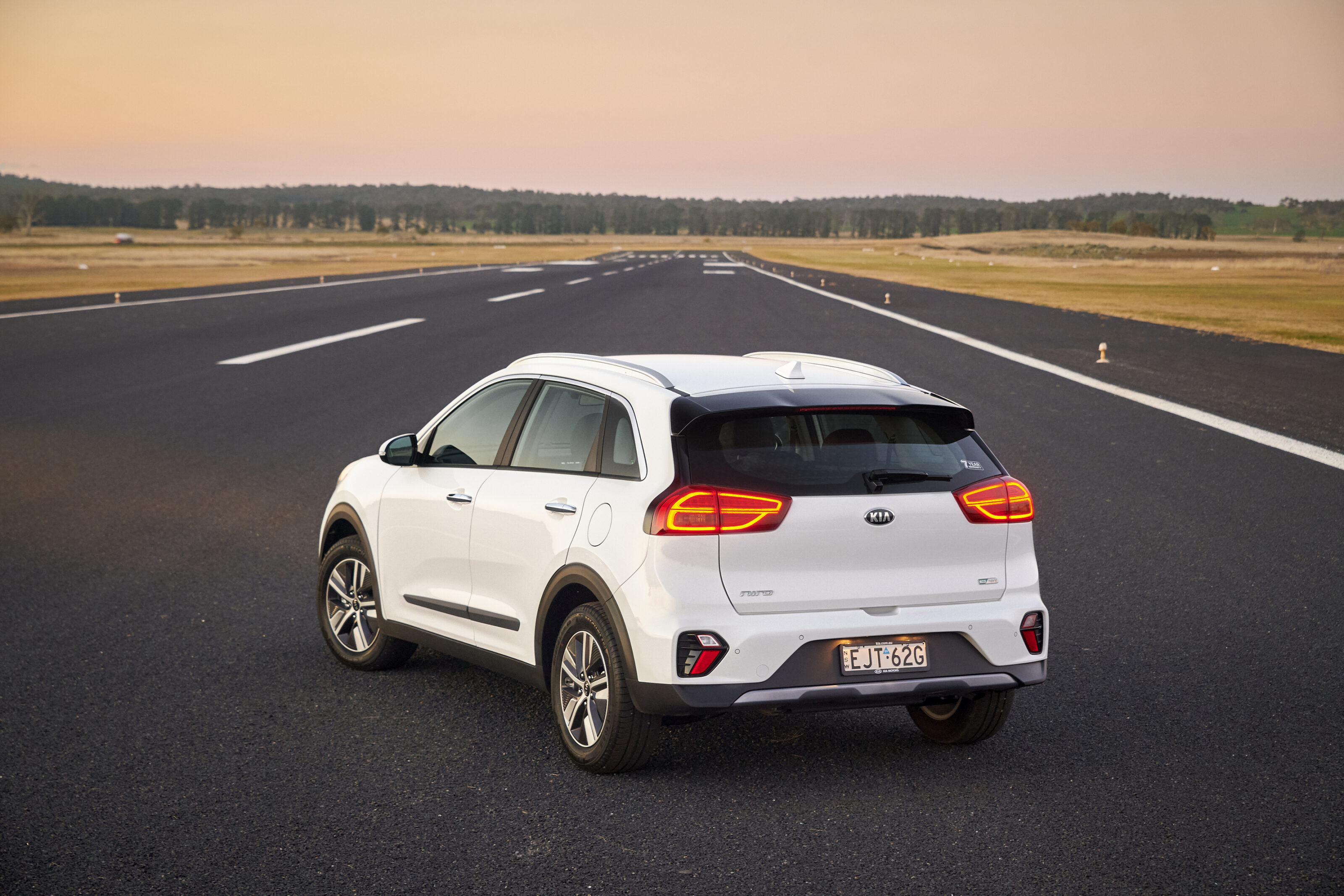
What is the Kia Niro PHEV S like to charge and drive?
The Niro Hybrid and PHEV have virtually identical drivetrains that contain a 77kW/147Nm 1.6-litre ‘Kappa’ GDI petrol engine that sends power to the front wheels via a six-speed automatic gearbox.
This is linked to a transmission-mounted 45kW/170Nm electric motor, resulting in combined power and torque output of 104kW/265Nm.
Of course, the key point of difference that the PHEV has over the Hybrid is the bigger 360-volt lithium polymer battery that can be charged to provide an all-electric driving range of up to 58 kilometres, which helps brings an official combined fuel economy rating of just 1.3L/100km.

That range is pretty good considering the smallish 8.9kWh battery and is more than enough to cover the average Aussie commute.
An upside to having a relatively low wattage battery is that charges reasonably quickly.
The Niro uses the Type 2 ‘Mennekes’ charging port, which is now the standard in Australia and Europe for AC charging, and comes with a charging cable that can plug into a standard 240-volt power outlet.

Charge it from a normal 10-amp 2.0kW socket that’s in every garage and, according to Kia, it will take…
Actually, Kia hasn’t provided that number. I asked about it during the launch presentation only to be told no one had checked that yet!
Some quick maths suggest home trickle charging will take just four and three-quarter hours, making this one of the more convenient plug-in hybrids when it comes to home charging.
Kia is more forthcoming when it comes to charging with a 15-amp, 3.3kW socket, which takes two hours and 15 minutes.

Unfortunately, 3.3kW is the quickest you’ll be able to charge the Niro PHEV, even if using faster 7.2kW or 22kW AC chargers, which isn’t very convenient if you’re unable to charge at home or work.
On the plus side, the Niro PHEV offers different ways to drive efficiently. Of course, the best way to do that is in EV mode, which uses battery power alone but will employ the engine when you really need a power boost.
If the battery is getting low you can select Hybrid mode, which operates like a normal hybrid vehicle, while Automatic mode chooses between battery power or hybrid depending on driving conditions and remaining battery charge – I reckon most people will use this.
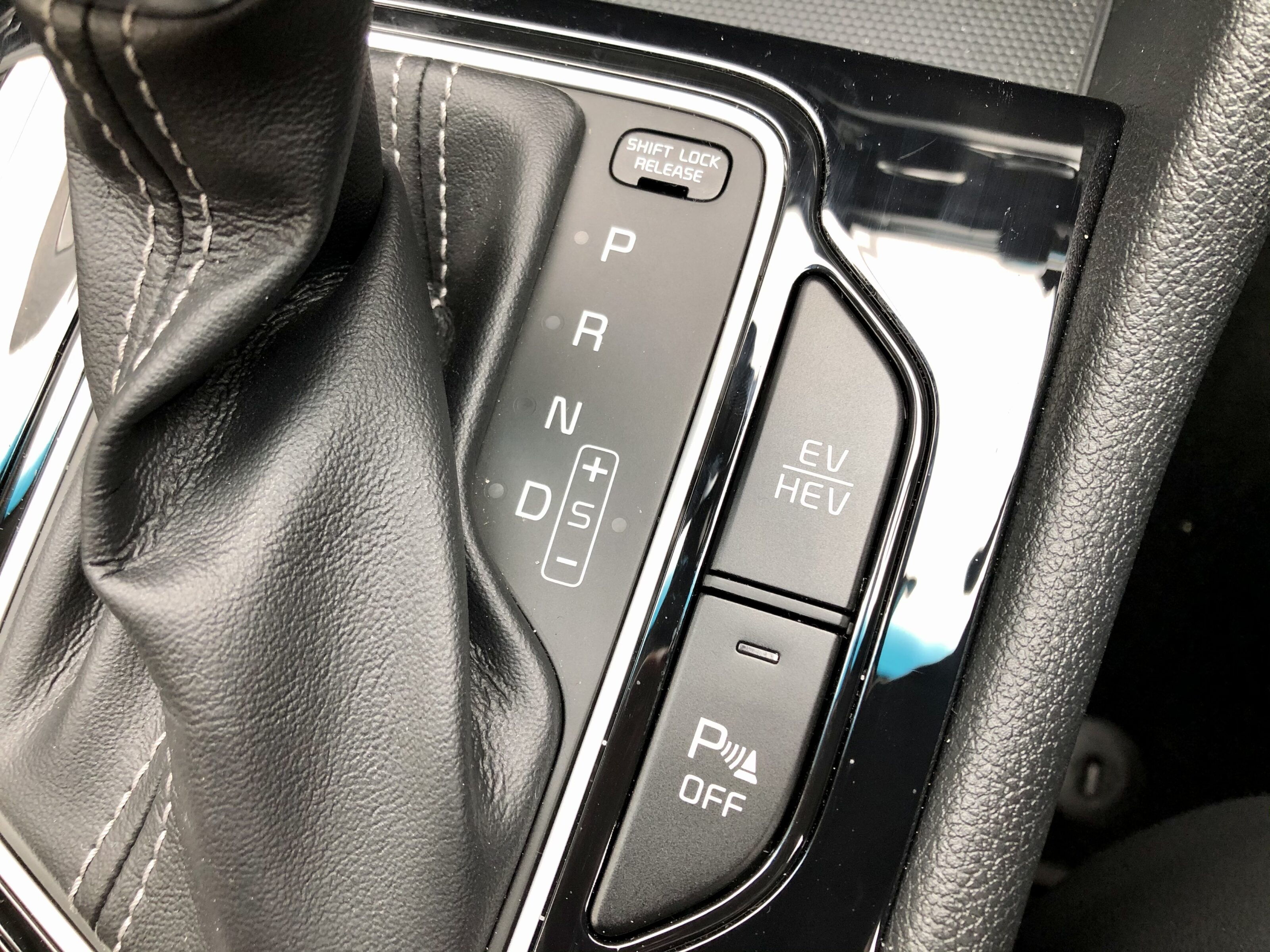
Unlike more powerful PHEVs and EVs, you don’t really feel a kick from the electric motor when putting foot down as the powertrain is tuned to prioritise efficiency over performance.
However, if you need, or feel like, some proper oomph, flicking the gear shifter to the right to engage Sport mode combines engine and motor power, which suddenly makes you feel like you’re driving an entirely different vehicle.
This is the first Kia to come to Australia with the 1.6-litre Kappa GDI that runs on the Atkinson cycle. Coupled with a six-speed dual-clutch auto and the electric motor, it feels way friskier than the bland 1.4- and 2.0-litre direct injection offerings in other Kia models and would be a peach in something like a Cerato.
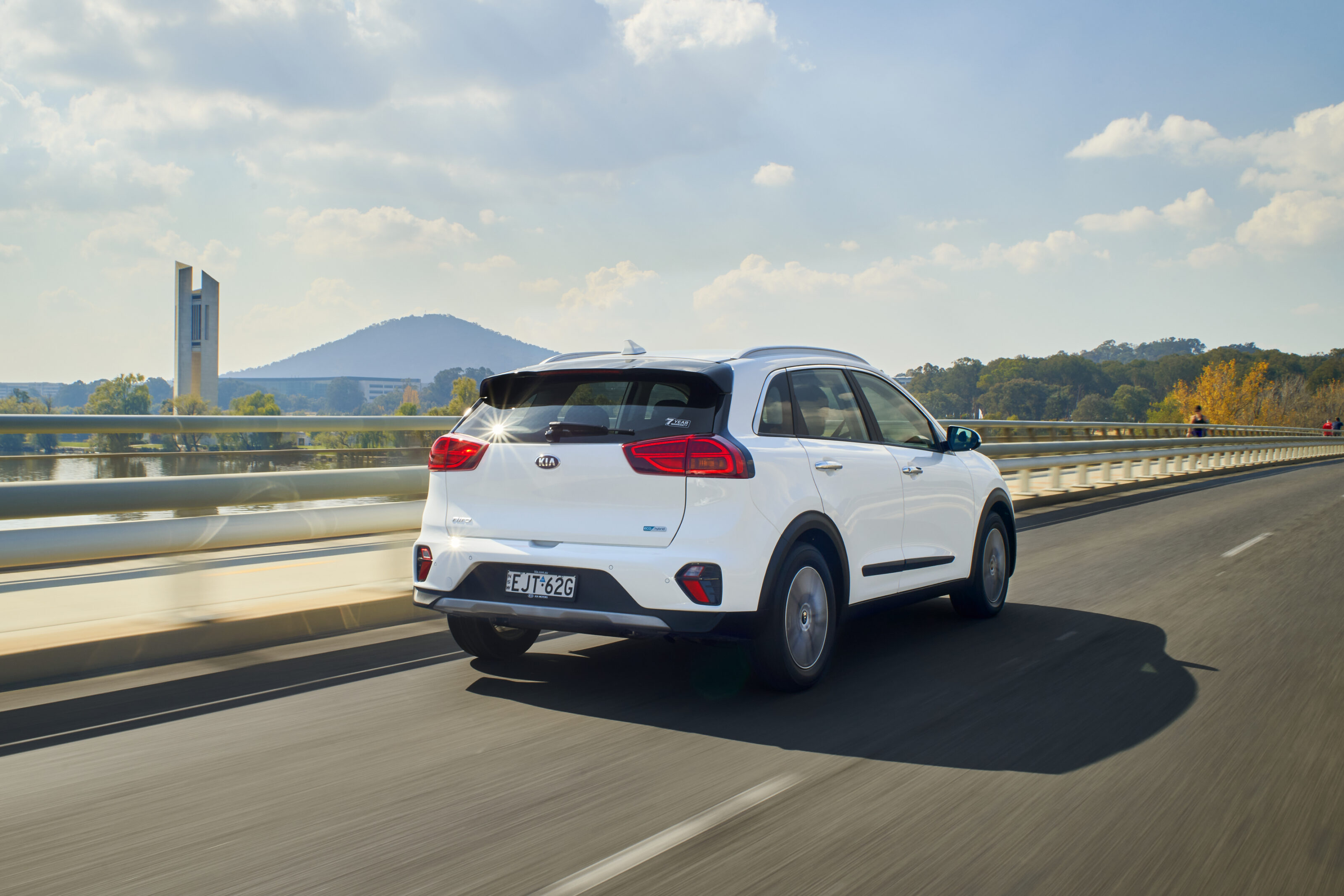
Okay, so it makes a mockery of forking out extra on a PHEV to save money and the planet but used sparingly it doesn’t seem to have a significant impact on fuel economy.
My first 100 kilometres in the Niro PHEV, including using in all the different drive modes as well as Sport, took in freeways, around-town journeys and some meandering roads just outside Melbourne. According to the trip computer I averaged just 3.2L/100km.
The Niro’s driving dynamics aren’t too bad either. Its hefty battery-induced 1564kg kerb weight can lead to a lack of compliance between the front and rear axles when negotiating bends, but drive it as intended and feels nimble enough, particularly around town.
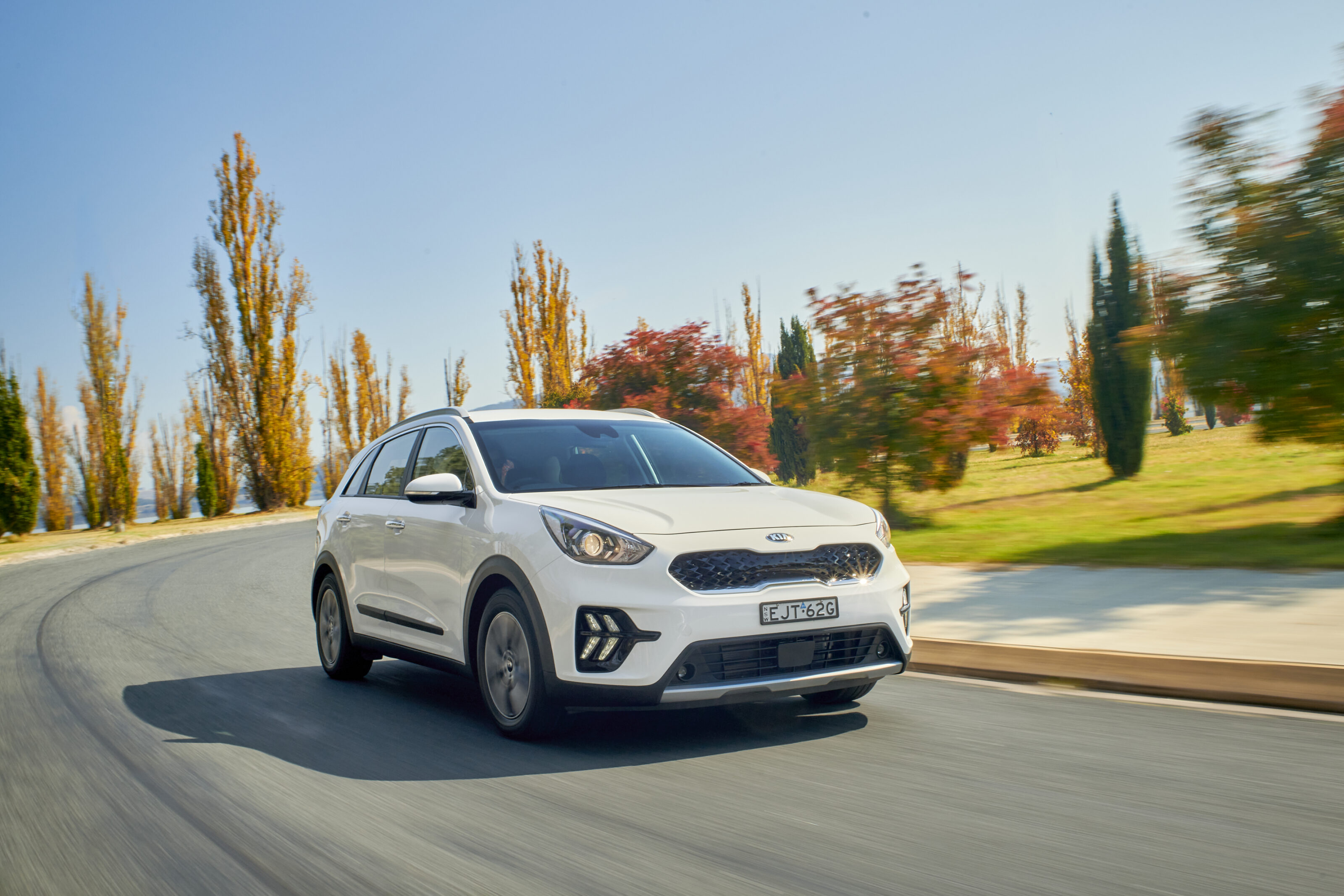
Unlike most Kia models it hasn’t undergone an Australian suspension tuning program but the front strut/rear multi-link suspension handles local conditions pretty well. The ride can get a little busy on deteriorating country roads, but there was rarely any jarring, if at all, thanks also in part to the chunky 16-inch Michelin Energy Saver+ tyres.
That’s good news for rear-seat passengers who also benefit from excellent leg and knee room thanks to the Niro’s 2700mm wheelbase that’s 70mm longer than the Seltos.
Fitting three adults across the rear seat would be quite a squeeze, but two would be quite comfortable, even six-footers who’ll appreciate the ample headroom.
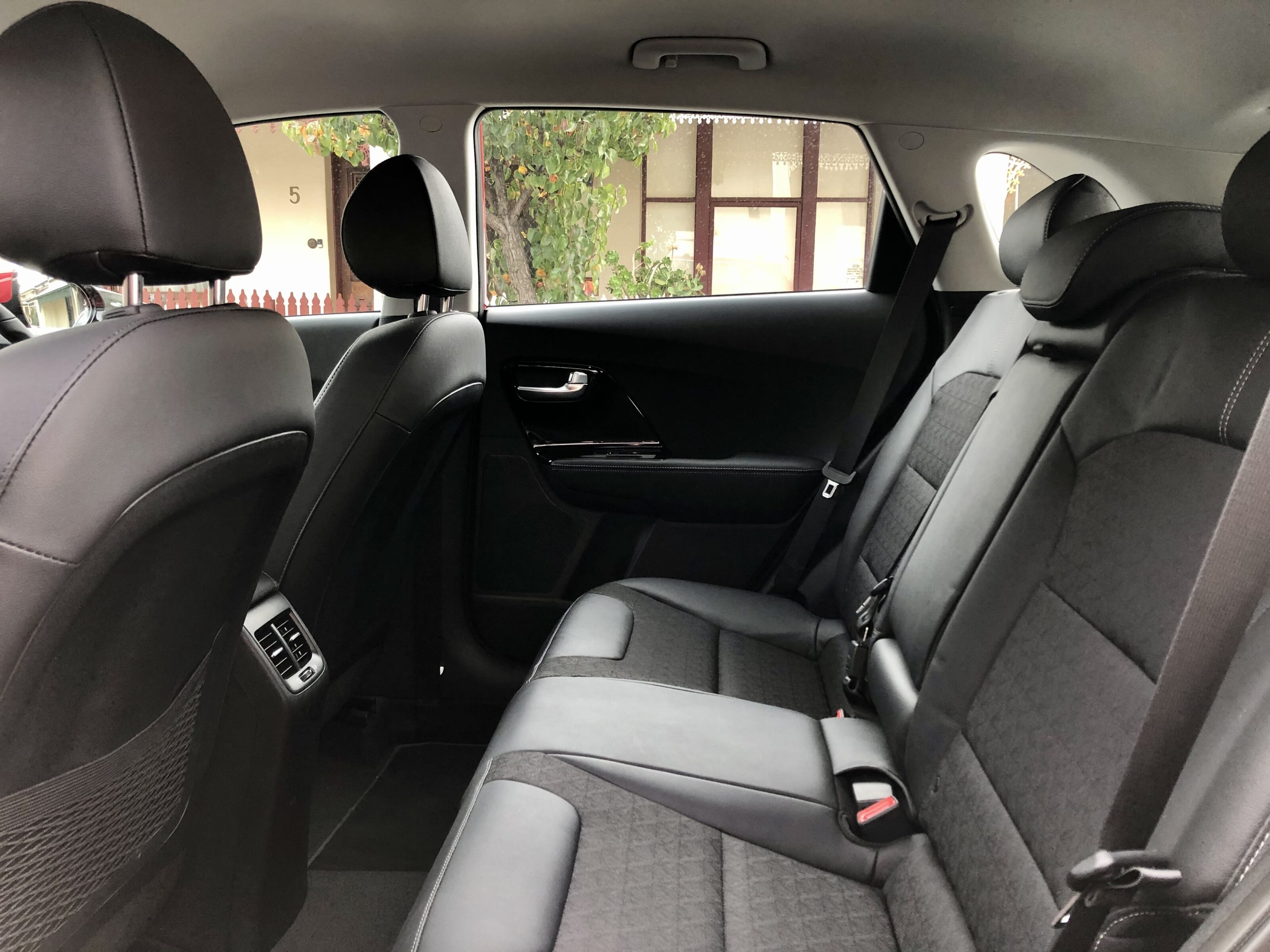
The S-spec brings basic rear-seat accoutrements including a centre armrest with cup holders and air vents on the back of the centre console.
The Niro PHEV’s spacious cabin isn’t reflected inside the tailgate where the boot space is just 324 litres, which is below average for a small SUV. This is the smallest boot of the three Niro versions because of the rearward location of the main battery, which also takes up space normally housing a spare wheel and means you have to make do with a tyre repair kit.
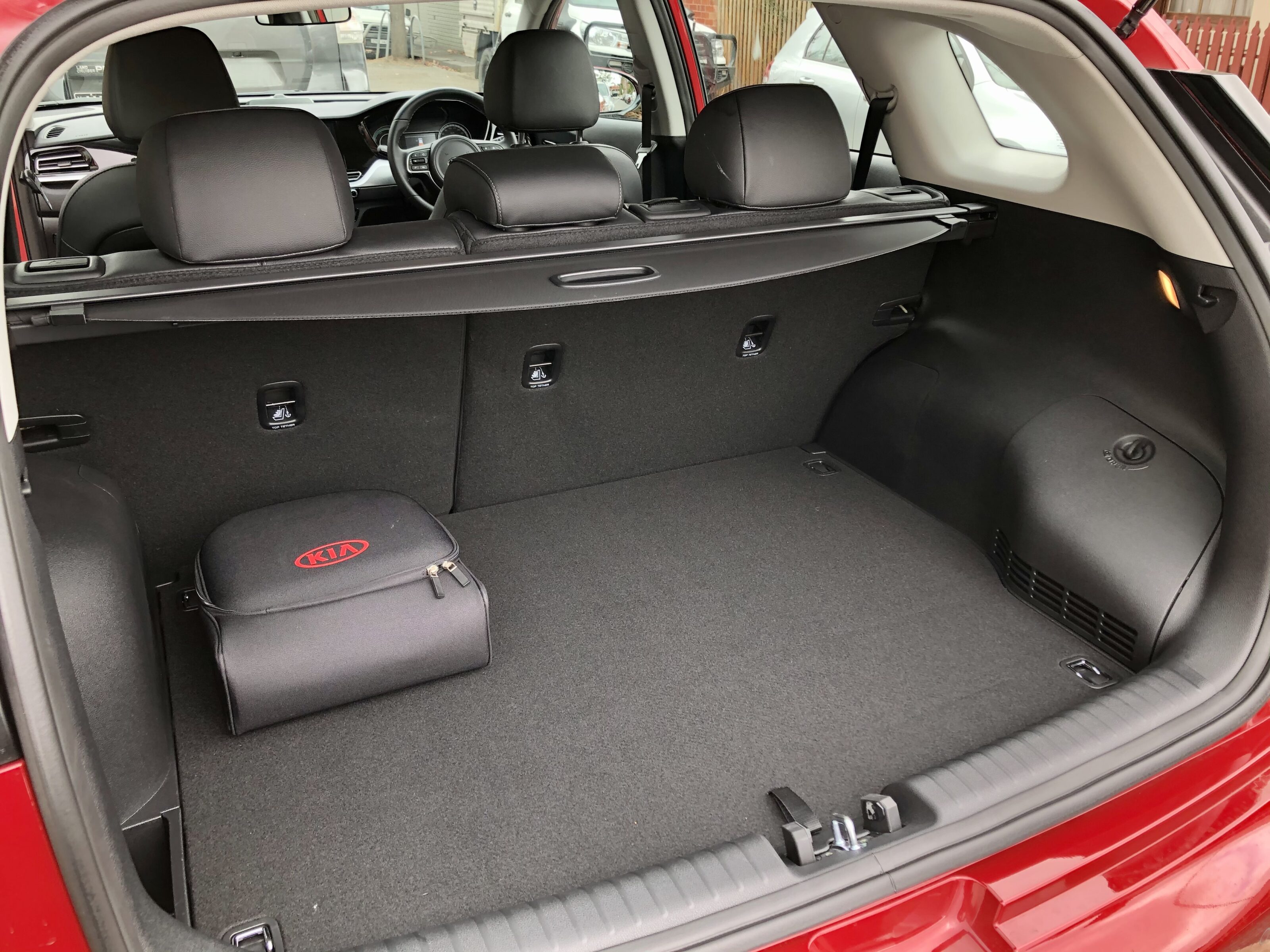
Kia’s first electrified models are covered by the company’s seven-year unlimited-kilometre warranty, seven-year capped price servicing and seven-year roadside assist. However, the high voltage battery and electric motor are covered by a seven-year/150,000km warranty.
The verdict
Is the Kia Niro PHEV the right version for you in terms of balancing efficiency and cost? That really depends if you can charge it every day and, to a lesser extent, if your daily commute is within its 58-kilometre range.
If so, this is an effective and relatively affordable way to enjoy emission-free driving with the flexibility to travel anywhere you want without being limited by the availability of charging stations.
Those unable to charge at home or work should be looking at the Niro Hybrid S that is $7500 cheaper, has the same performance and has an official 3.8L/100km combined efficiency rating that’s quite frugal even for an HEV.
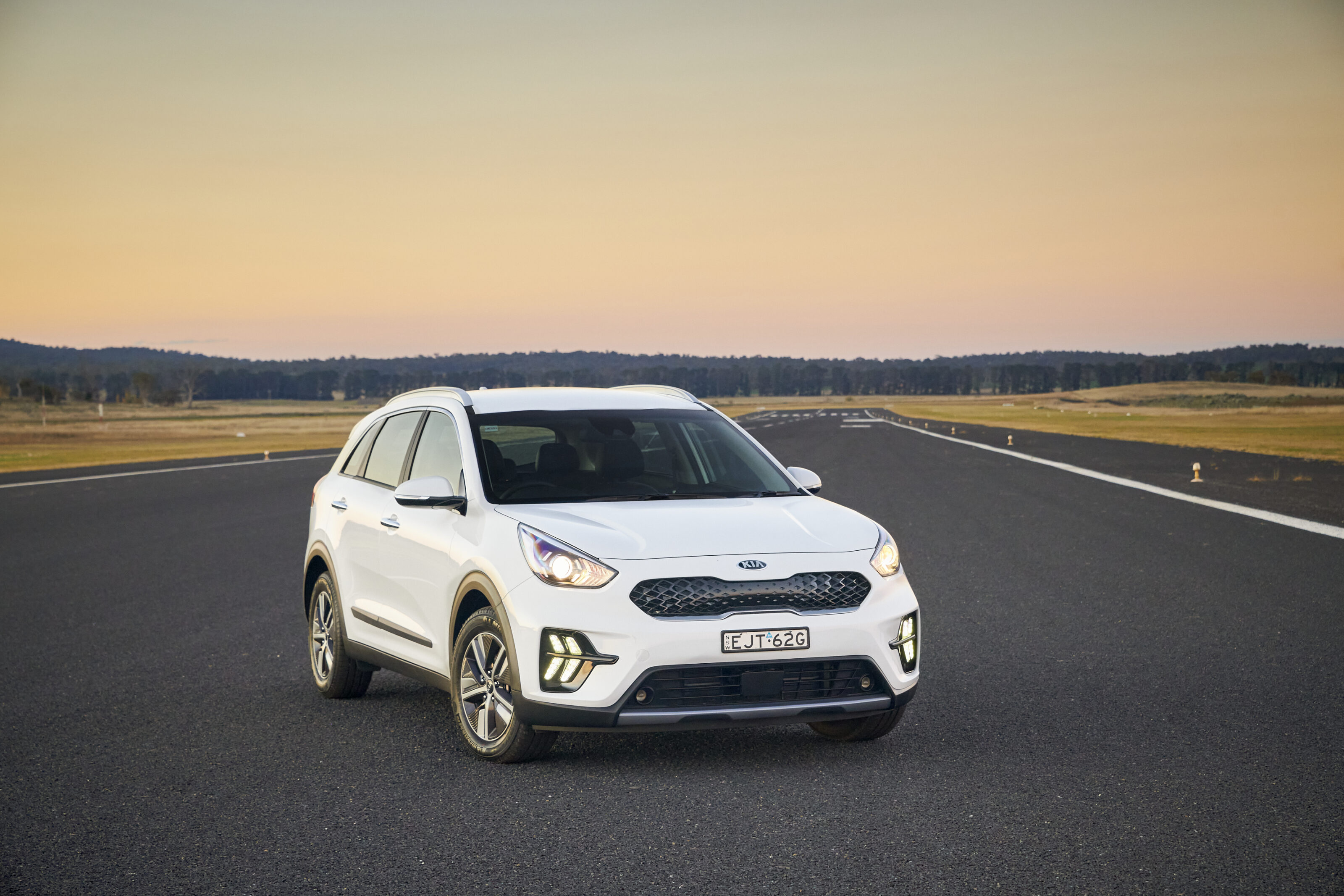
For me the biggest issue, and this applies to all variants, is the Niro’s age. Kia Australia has more or less implied that one reason it has brought the model here so late in its lifecycle is to prepare its dealer and service network for the brand’s EV onslaught led by the next-generation Niro and the exciting new EV6 that are expected to arrive in Australia before the end of 2022 with new-generation technology and efficiency.
Personally, if I were to spend big bucks on an electrified Kia, I’d wait until then.
Kia Niro PHEV S specifications
- Body: 5-door, 5-seat small SUV
- Drive: FWD
- Engine: 1580cc 4cyl, DOHC CVVT
- Motor: Permanent magnet/synchronous
- Total power: 104kW
- Total torque: 265Nm
- Battery: 8.9kWh
- EV range: 58 km
- Combined fuel consumption: 1.3L/100km
- Charging port: CCS2/Type 2
- Weight: 1564kg
- Transmission: 6-speed dual-clutch automatic
- Suspension: Front MacPherson strut/ rear multi-link
- Dimensions, L/W/H: 4355/1805/1545mm
- Wheelbase: 2700mm
- Brakes: Front ventilated discs (280mm), rear solid discs (284mm), regenerative braking
- Tyres: 205/60 R16 Michelin Energy Saver+
- Wheels: Alloy 16-inch
- Price: $46,590
Score breakdown
Things we like
- Decent EV range
- Quick 240v home charging
- Roomy cabin
- Comfortable ride
Not so much
- Dated looks
- Limited charging capacity
- Smallish boot
- Soon to be superceded
We recommend
-
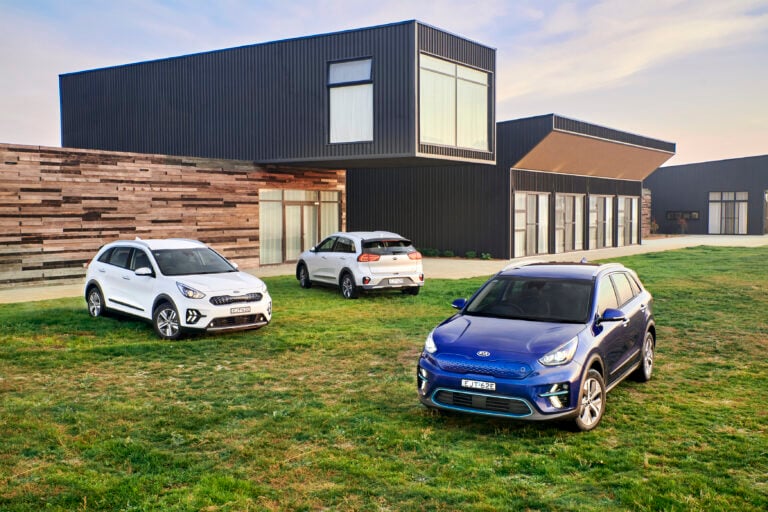 News
News2021 Kia Niro SUV pricing and features
The Kia Niro makes belated entry into the Australian market with hybrid, plug-in hybrid and battery electric versions
-
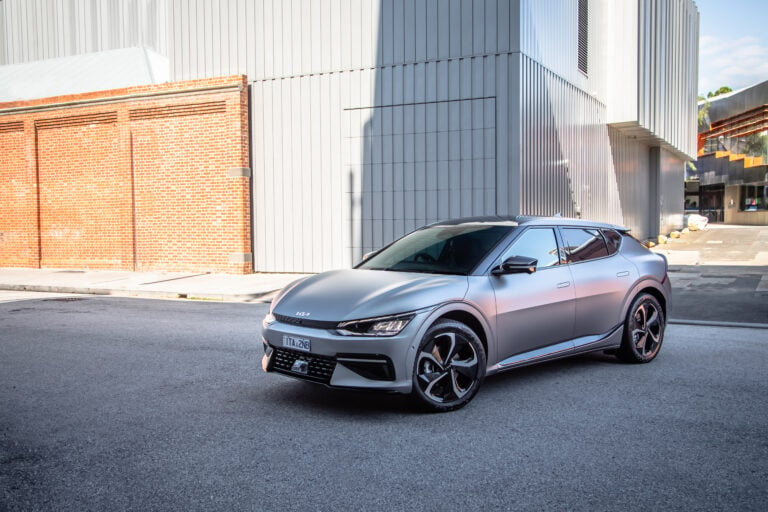 News
News2023 Kia EV6: Everything we know about the Ioniq 5's cousin
Kia’s first dedicated all-electric model will undercut its Korean cousin in pricing
-
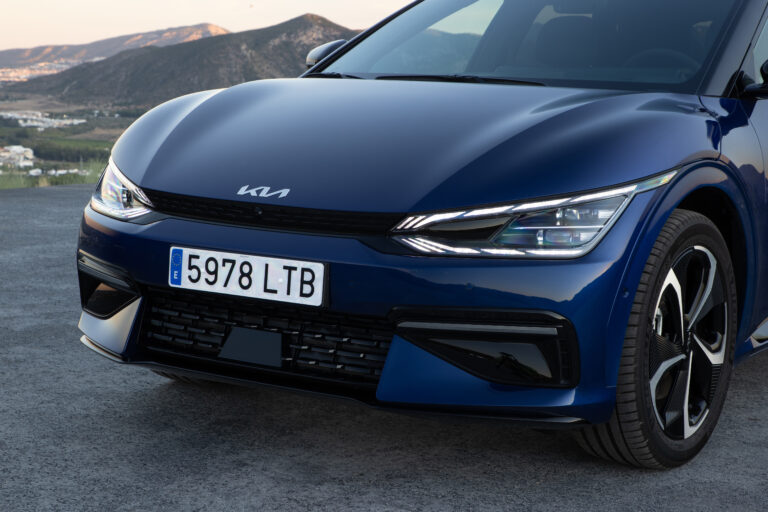 News
NewsKia EV6 prices and specs revealed for UK market
Korean automaker’s top-shelf EV gunning for Tesla Model 3
-
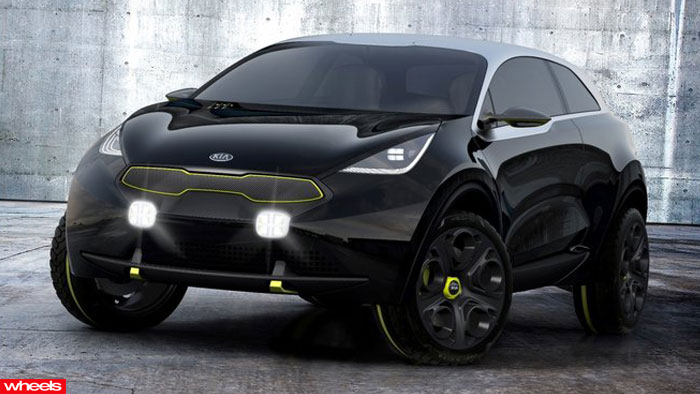 News
NewsKia's Frankfurt hero is Niro
Kia has taken the wraps off a sinister new concept, developed for this year’s Frankfurt Motor Show (Sept. 12-22), called Niro.


